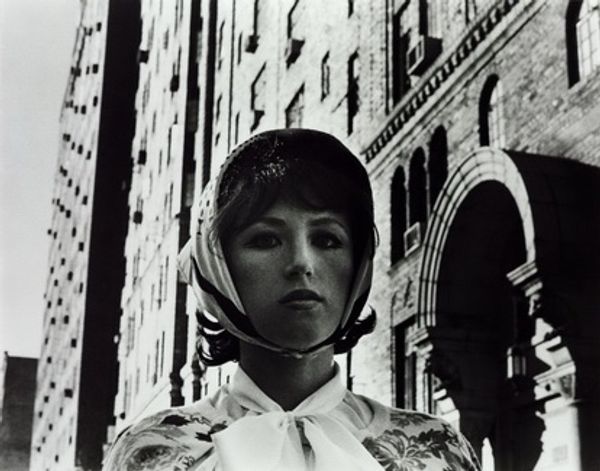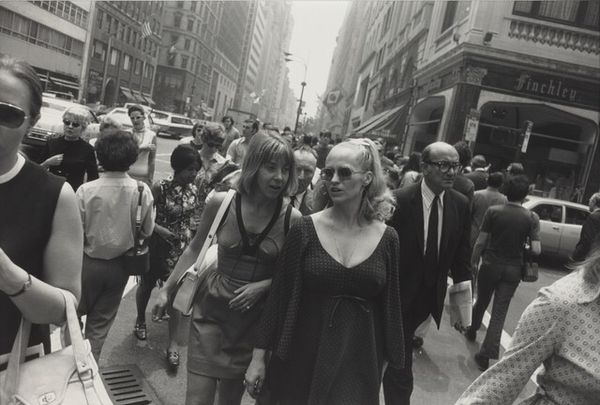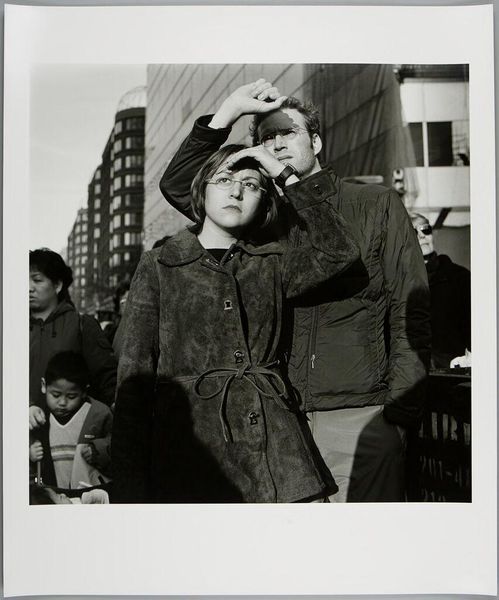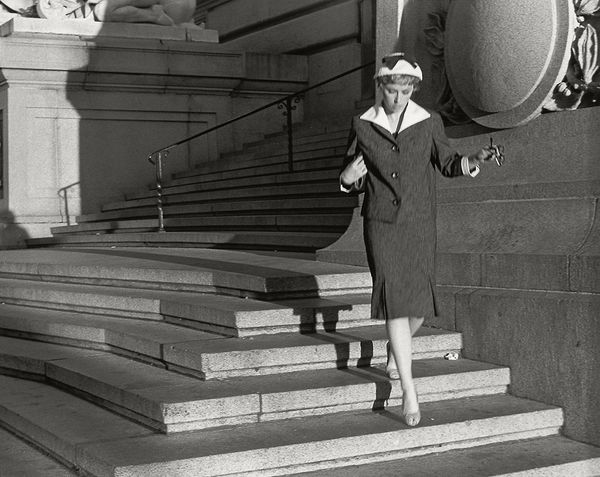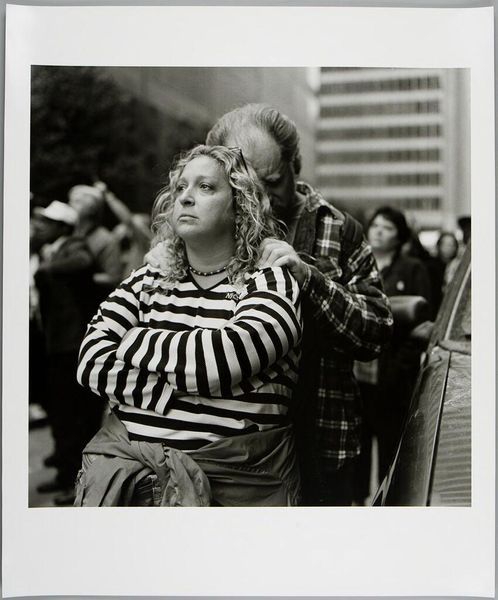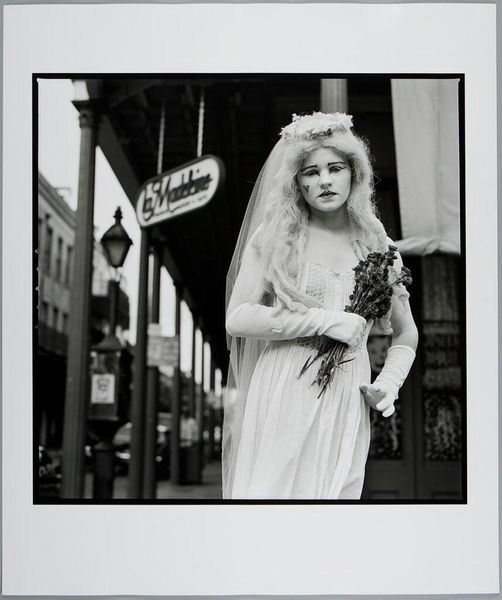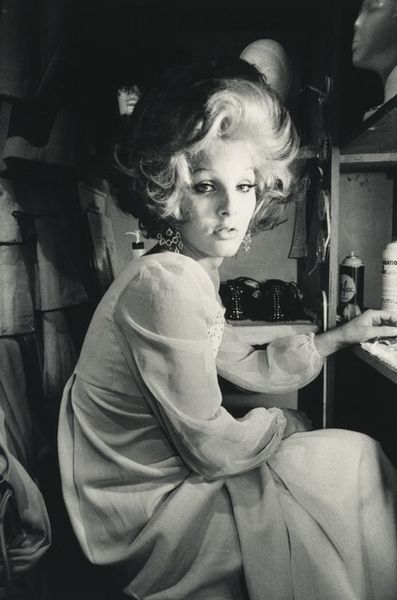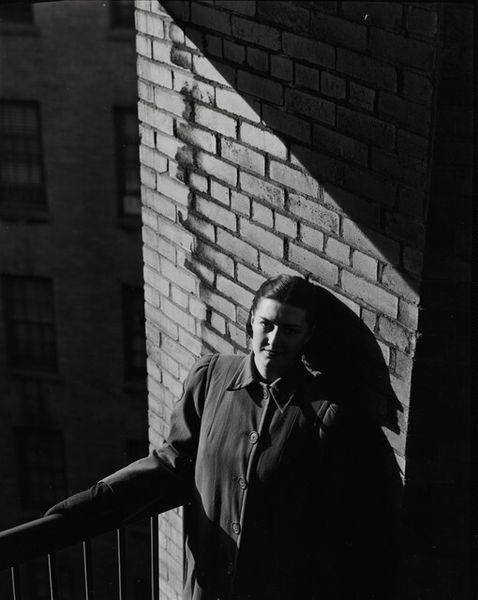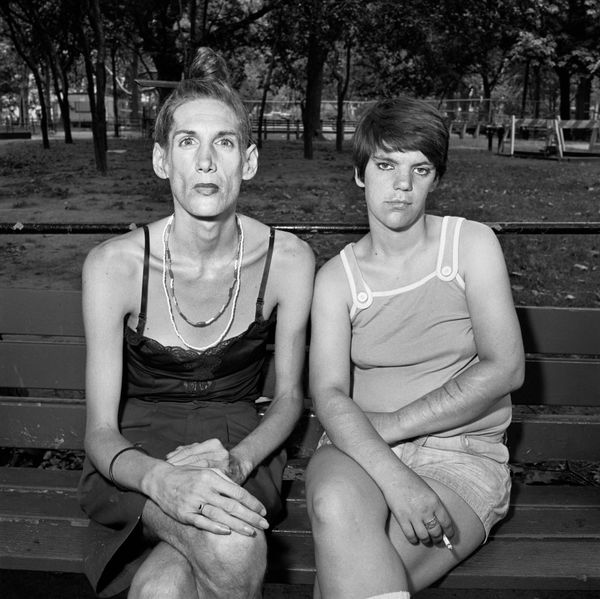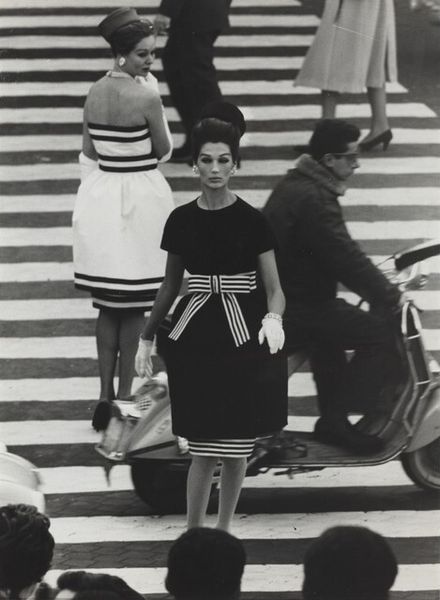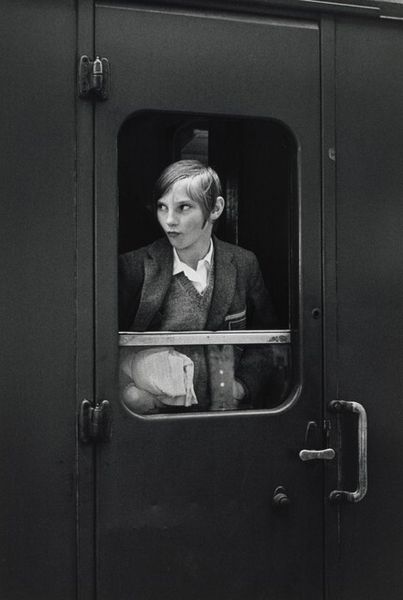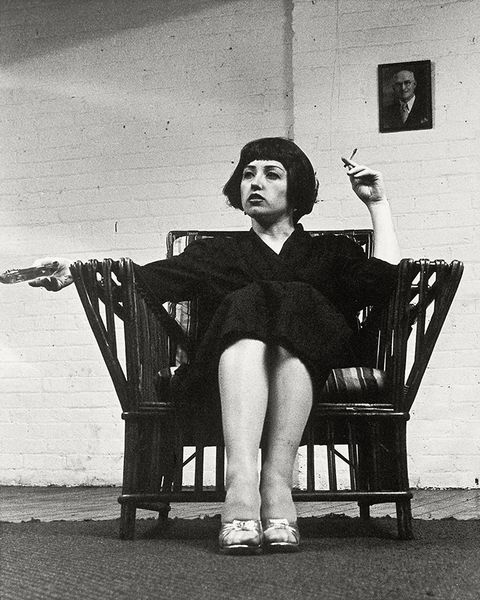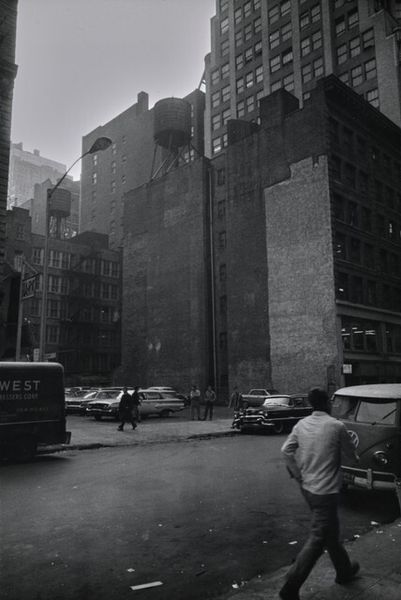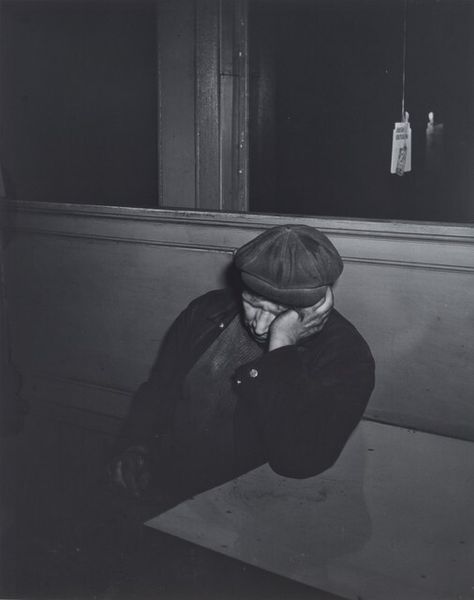
photography
#
portrait
#
photorealism
#
conceptual-art
#
black and white photography
#
portrait
#
postmodernism
#
street shot
#
photography
#
black and white
#
cityscape
#
monochrome
Copyright: Cindy Sherman,Fair Use
Curator: Cindy Sherman's "Untitled Film Still #21," created in 1979, presents a black and white photograph evocative of classic cinema. It's one in a series where Sherman stages herself in archetypal female roles from film, questioning representation and identity. What springs to mind for you when you see this piece? Editor: Immediately, I feel this melancholic mood, a bit lost-in-the-city. She’s got this wistful, almost tragic expression, looking up like she’s searching for something...or someone. There’s something very lonely about the image, amplified by the monochrome tones and those cold buildings looming behind her. Curator: Indeed. The cityscape certainly adds to the feeling of urban alienation, doesn’t it? But I think the architectural context is vital. The buildings serve almost as symbols themselves of a kind of anonymous, oppressive power that frames the figure, influencing the viewer’s response and narrative understanding. Sherman understood, culturally, how to construct potent imagery. Editor: That makes perfect sense. It’s as if she’s consciously being swallowed up by these gigantic, impersonal structures, visually reflecting how societal expectations can kind of box you in. And that gaze, pointed heavenward but definitely not hopeful; maybe that reflects how characters she impersonates also gaze to an undefined savior. Curator: It is fascinating to explore how, by staging these scenarios, Sherman uses our pre-existing cultural knowledge of film and photography, referencing popular film noir tropes, and subtly interrogating them. Do we unconsciously read an element of, perhaps, powerlessness in her presentation of a 1950s ingenue? Editor: Absolutely. I also think that in taking control of the narrative and visually deconstructing cinematic portrayal, she invites viewers to critically reflect on these gendered portrayals, how these expectations can shape our ideas about femininity. I am now interpreting the hopeful gaze also as a quest of self discovery, even emancipation. Curator: Precisely, a key element of Sherman’s genius lies in this act of both invoking and simultaneously subverting these ingrained visual narratives. Thanks for illuminating all of this in my mind; I learned new layers. Editor: Likewise. It is hard to resist reading additional possible significances. This image seems even more potent after speaking about its potential cultural resonance.
Comments
No comments
Be the first to comment and join the conversation on the ultimate creative platform.
